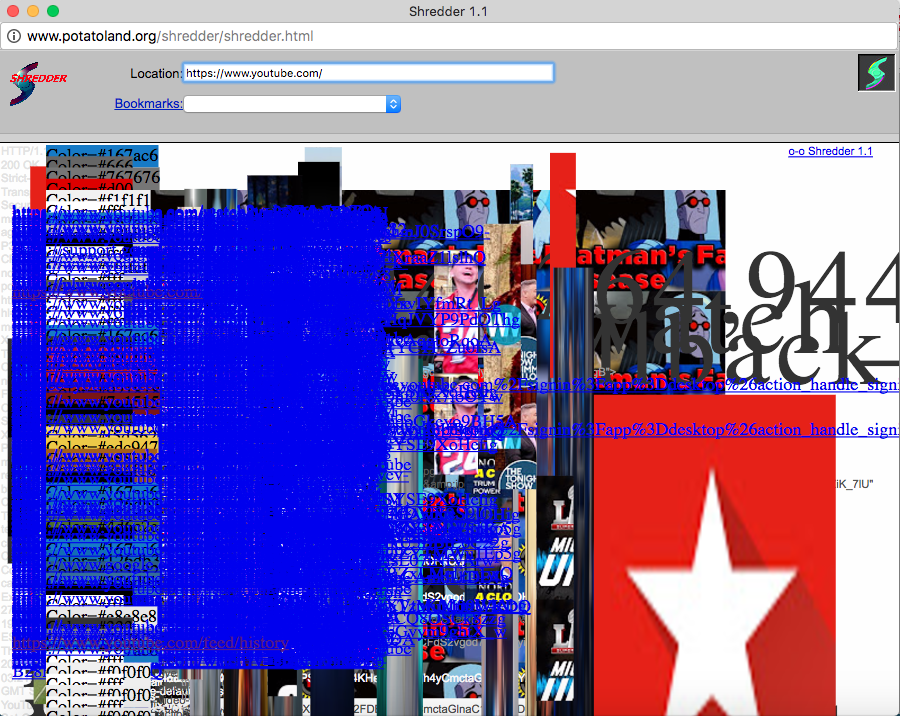About
The Shredder(1998) was a custom browser by Mark Napier that deconstructs the website that is keyed in by the user and displays the result of it.
The aim was not to appropriate from the web but emphasise the materiality of the web. He wanted to expose the raw material of what makes a website; using the information for the website directly and displaying them. [i]
Shredding the work…
After seeing the websites being shredded, it was quite confusing. information was everywhere, mainly flushed to the left side of the shredded webpage, with links, references and images being everywhere on the page. There seems to be a structure but no clear way to read it for any understanding.
Thinking about it, this brings out the fact that webpages are more than just what is displayed to us immediately. Rather, they consist of the codes to make the expected information more organised and accessible, and more often now, engaging.
Quoting from Rosa Menkman in the book The Glitch Moment(um),
“I describe the ‘glitch’ as a (actual and/or simulated) break from an expected or conventional flow of information or meaning within (digital) communication systems that results in a perceived accident or error. A glitch occurs on the occasion where there is an absence of (expected) functionality, whether understood in a technical or social sense. Therefore, a glitch, as I see it, is not always strictly a result of a technical malfunction.”
-Rosa Menkman, The Glitch Moment(um), 2011, page 9.
Putting back the shredded pieces
Through The Shredder, it makes you think of how and what we expect when looking at a webpage – how we only want to see the information that we want and to understand what we are seeing. And when we say we are taking a look at a particular website or webpage, we are not. We are just looking at the expected information that we want to see, and excluding the information that makes the websites and pages for what it is.
Therefore, like what Rosa Menkman mentioned in the above quote:
“Therefore, a glitch, as I see it, is not always strictly a result of a technical malfunction.”
Which is what we can see from The Shredder, whereby the intended use of glitch enables us to see what a website and page really is.
[i] from Digital Imaging and Photography: Mark Napier: Shredder 1.0


Great point about how Napier’s Shredder undermines our expectations of the Web. As you say, we expect to see information displayed in an organized and readable way, but under the surface of the Web page, normally hidden from the viewer, is a universe of code. Napier undermines these expectations by allowing us to see through the page into the software architecture. So how do we think about this from an aesthetic basis? How does it rupture the normal aesthetics of Web design, rendering a new kind of aesthetic experience?